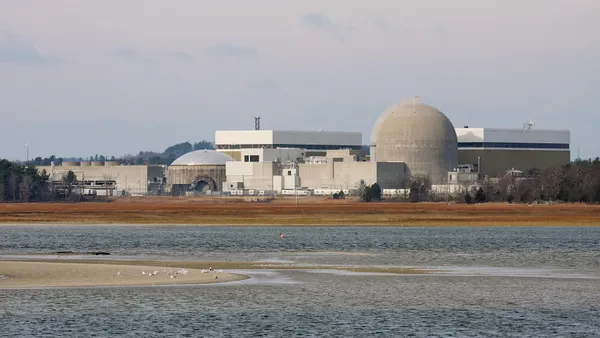About 94% of existing gas-fired power plant capacity already meets the Environmental Protection Agency’s proposed greenhouse gas emissions limits or could meet them with “minor” operational changes, according to RMI.
“Existing gas plants would not have to significantly change operations to reduce their emissions in line with the EPA’s proposed performance standards,” RMI analysts said in analysis released Monday. “The standards provide flexibility for gas plants to play their current role in supporting grid reliability.”
However, the PJM Interconnection and other grid operators as well as utilities and power companies in comments to EPA earlier this month warned the agency’s proposal could threaten grid reliability, partly by driving power plants into retirement.
In May, the EPA proposed greenhouse gas emissions limits for coal-, gas- and oil-fired power plants, with initial requirements beginning in 2030 for coal-fired generators and 2032 for gas-fired units. The limits can be met by highly efficient operations, carbon capture and sequestration, co-firing natural gas for coal units, and with green hydrogen for gas generators, according to the proposal.
For existing gas-fired power plants, the rules would apply to those larger than 300 MW that run with at least a 50% capacity factor. They would have two compliance options: CCS with 90% carbon capture by 2035, or co-firing of 30% low-GHG hydrogen beginning in 2032 and co-firing 96% starting in 2038, according to the agency. New gas-fired power plants with a 20% or higher capacity factor must meet those emissions limits.
Nearly 80% of the 470 GW existing gas-fired generating capacity would be unaffected by the proposed standards because they fall below the 300-MW threshold or operate less than half the time, according to RMI, a non-profit group focused on reducing greenhouse gas emissions from the energy sector. The analysis was based on data from the U.S. Energy Information Administration accessed through the Public Utility Data Liberation Project.
Much of the almost 100 GW of capacity that would be affected by the proposal could comply with minor changes in their operations by reducing their capacity factors below the 50% threshold, the RMI analysts said.
However, reducing capacity factors below 50% in many cases wouldn't be a "minor operational change," according to Jeff Holmstead, a partner at the Bracewell law firm and former administrator at the Environmental Protection Agency’s air office.
Also, less-efficient gas-fired power plants would likely run more to keep the lights on, driving up carbon emissions, he said in an email.
Six percent of gas-fired capacity would likely have to reduce their capacity factor by more than 20% or invest in emissions reduction technology to meet the 2032 or 2035 deadlines, they said.
According to RMI, the top 10 companies with the most capacity that would be affected by the EPA’s proposal are: Florida Power & Light, known as FPL, Georgia Power, Entergy Louisiana, Southern Power, Duke Energy Florida, Tennessee Valley Authority, Duke Energy Progress, Duke Energy Carolinas, Invenergy and Lightstone Generation.
About 54% of FPL’s fleet, or about 11,390 MW, would be affected by the EPA’s proposal. But only 3% of that capacity operates above a 70% capacity factor, according to RMI.
Meanwhile, gas-fired capacity factors are expected to fall as more renewable energy and energy storage comes online.
Studies by the National Renewable Energy Laboratory and the University of California, Berkeley, indicate that the EPA’s proposed emissions limits will likely not hurt the role existing gas-fired power plants will play in supporting reliability when there is significant amounts of renewable energy on the grid, according to RMI.
In NREL’s most conservative scenario, average gas-fired capacity factors fall to about 40% by 2030, down from 52% today, the RMI analysts said.
Grid operators and utilities have options for bolstering grid reliability without using fossil-fueled generation, including virtual power plants, energy efficiency, speeding interconnection reviews for planned resources, and adding transmission capacity between regions, the analysts said.
Editor’s note: This story has been updated to add comment from Jeff Holmstead, a partner at the Bracewell law firm.























